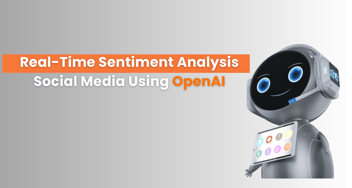Understanding Sentiment Analysis with OpenAI GPT Models
This guide explores sentiment analysis using OpenAI GPT models. It covers the mechanisms, the role of GPT models, and practical applications, providing a concise overview of understanding sentiment analysis with OpenAI's technology.

Sentiment analysis is a natural language processing (NLP) task that involves identifying and extracting opinions and emotions from text. It is a powerful tool that can be used to understand public opinion, gauge customer satisfaction, and track brand performance.
OpenAI GPT models are a family of large language models that are trained on a massive dataset of text and code. GPT models are capable of generating text, translating languages, writing different kinds of creative content, and answering your questions in an informative way.
GPT models can also be used for sentiment analysis. In fact, they have been shown to achieve state-of-the-art results on a number of sentiment analysis benchmarks.
Here are some of the advantages of using OpenAI GPT models for sentiment analysis:
-
Accuracy:
GPT models are trained on a massive dataset of text and code, which gives them a deep understanding of human language. This allows them to identify sentiment with a high degree of accuracy, even in complex and nuanced text. -
Versatility:
GPT models can be used to analyze a wide variety of text formats, including social media posts, product reviews, customer feedback, and news articles. This makes them a valuable tool for a wide range of businesses and organizations. -
Scalability:
GPT models can be scaled to handle large volumes of text data. This makes them ideal for analyzing social media data and other large datasets.
How to use OpenAI GPT Models for Sentiment Analysis
To use OpenAI GPT models for sentiment analysis, you will need to:
Prepare a labeled dataset:
This dataset should contain examples of text with their corresponding sentiment labels. For example, you could use a dataset of tweets labeled as positive, negative, or neutral.
Fine-tune the model:
You can fine-tune the GPT model on your labeled dataset to improve its performance on sentiment analysis. This is done by providing the model with examples of text and their corresponding sentiment labels.
Use the model to predict sentiment:
Once the model is fine-tuned, you can use it to predict the sentiment of new text data. To do this, simply provide the model with the text data and it will predict the sentiment label.
Example
Here is an example of how to use OpenAI GPT-3 for sentiment analysis:
Conclusion
OpenAI GPT models are a powerful tool for sentiment analysis.
Smart Solutions, Smarter Business!
Our team is dedicated to building cutting-edge generative AI solutions that cater to your unique business requirements.
They are accurate, versatile, and scalable. If you are looking for a way to improve your sentiment analysis capabilities, I encourage you to consider using OpenAI GPT models.


%201-1.webp)


.png?width=344&height=101&name=Mask%20group%20(5).png)
















